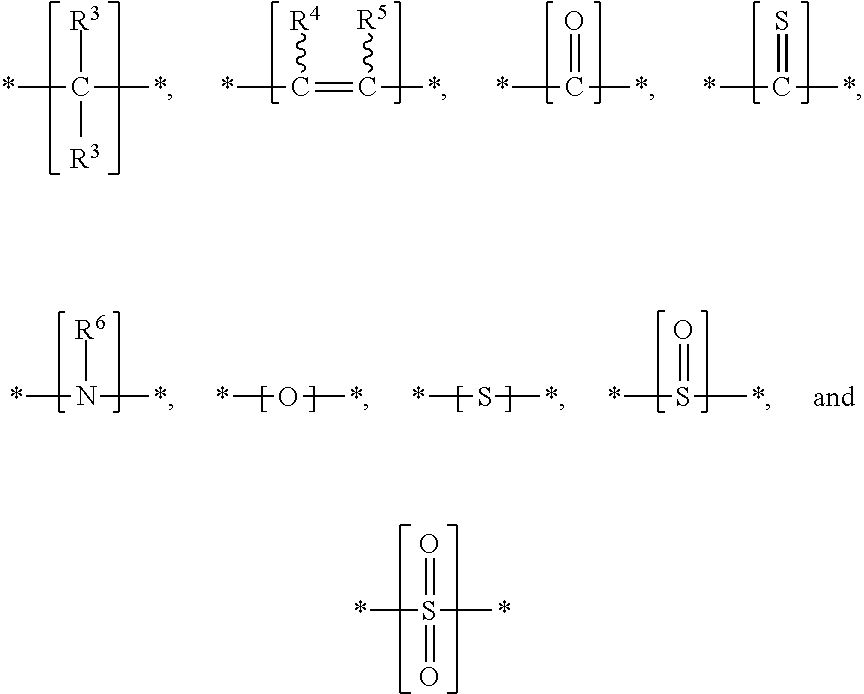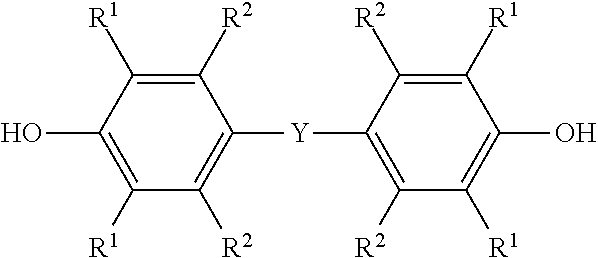Polyurethane foam and associated method and article
a technology of polyurethane foam and associated methods, applied in the field of polyurethane foam, can solve the problem of complex family of polyurethane resins
- Summary
- Abstract
- Description
- Claims
- Application Information
AI Technical Summary
Benefits of technology
Problems solved by technology
Method used
Image
Examples
embodiment 1
[0048]A polyurethane foam comprising the product of a reaction mixture comprising: a polyol comprising a poly(phenylene ether) having a number average molecular weight of 600 to 2000 atomic mass units and an average of 1.5 to 3 hydroxyl groups per molecule; an aromatic isocyanate compound having an average of at least 2 isocyanate groups per molecule; and a blowing agent; wherein the reaction mixture is characterized by an isocyanate index of 65 to 95; and wherein the polyurethane foam has a density of 0.01 to 0.16 gram / centimeter3 measured at 23° C. according to ASTM D 3574-08, Test A.
embodiment 2
[0049]The polyurethane foam of embodiment 1, wherein the poly(phenylene ether) is a copolymer of monomers comprising a monohydric phenol and a dihydric phenol.
embodiment 3
[0050]The polyurethane foam of embodiment 2, wherein the monohydric phenol comprises 2,6-dimethylphenol and the dihydric phenol comprises 2,2-bis(3,5-dimethyl-4-hydroxyphenyl)propane.
PUM
| Property | Measurement | Unit |
|---|---|---|
| Percent by mass | aaaaa | aaaaa |
| Percent by mass | aaaaa | aaaaa |
| Percent by mass | aaaaa | aaaaa |
Abstract
Description
Claims
Application Information
 Login to View More
Login to View More - R&D
- Intellectual Property
- Life Sciences
- Materials
- Tech Scout
- Unparalleled Data Quality
- Higher Quality Content
- 60% Fewer Hallucinations
Browse by: Latest US Patents, China's latest patents, Technical Efficacy Thesaurus, Application Domain, Technology Topic, Popular Technical Reports.
© 2025 PatSnap. All rights reserved.Legal|Privacy policy|Modern Slavery Act Transparency Statement|Sitemap|About US| Contact US: help@patsnap.com



